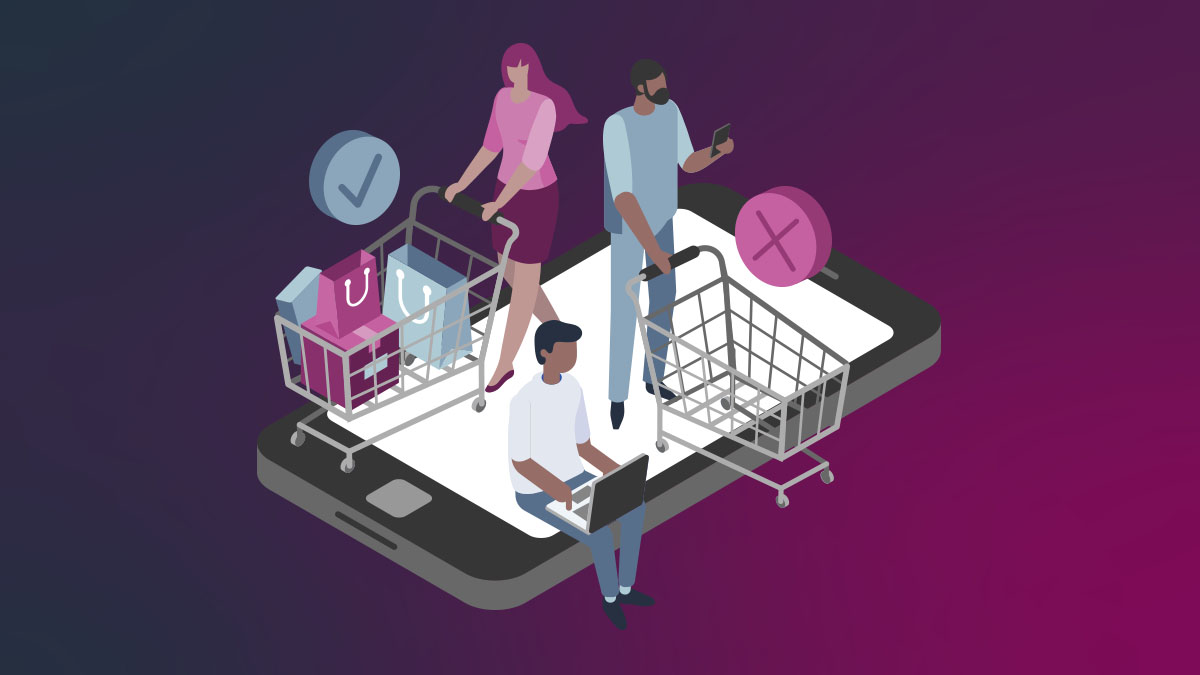Loss aversion is a psychological bias that can strongly influence how users interact with digital products, often leading to hesitation and disengagement. When users feel uncertain or fear making the wrong decision, their confidence in navigating online platforms or committing to a service can decrease. This lack of confidence can result in them avoiding actions like completing a purchase or submitting personal information which consequently impacts business revenue. As users disengage, conversion rates drop, leading to missed opportunities for potential sales. For UX designers, understanding these psychological factors is crucial. By implementing strategies such as emphasizing gains over losses, providing reassurance through clear and consistent messaging, and incorporating positive reinforcement to boost user confidence, designers can mitigate the negative effects of these biases, resulting in better user experiences and improved business outcomes.
Understand Loss Aversion to Enhance User Experience and Build Trust
Loss aversion, the preference for avoiding losses over acquiring equivalent gains, plays a significant role in how users interact with digital products. In digital environments, this psychological phenomenon can cause users to hesitate or feel anxious when making decisions, such as completing a purchase or sharing personal information. As a result, they might abandon their shopping carts, avoid signing up for services, or decline to provide personal information.
Recognizing the impact of loss aversion is essential for UX designers to create environments where users feel secure and motivated to engage with products online, building user trust and confidence. Ignoring these psychological barriers can lead to decreased user engagement, lower conversion rates, and potential revenue loss. Signs of loss aversion can be identified through user testing and analytics, such as high bounce rates on checkout pages or frequent form abandonment. By iterating on design based on continuous user feedback, UX designers can develop strategies to mitigate loss aversion.
Leverage Psychological Insights to Enhance UX Design
Crafting an experience that resonates with users goes beyond aesthetics and functionality; it involves understanding the psychological motivations that drive human behavior. The studies conducted by Kahneman and Tversky offer valuable insights into how people assess risk and value, particularly through their development of Prospect Theory and related experiments. Their research was pivotal in uncovering how people perceive gains and losses, leading to their exploration of the Value Function and the Endowment Effect, demonstrating how individuals are naturally inclined to fear losses more than they anticipate.
Kahneman and Tversky’s journey began with the observation that people are inherently loss-averse, meaning they fear losing something more than they value gaining something of equivalent worth. This insight forms the foundation of the Prospect Theory, which was further refined through their experiments. They discovered that when making decisions, especially under uncertainty, people are not purely rational; they are disproportionately motivated by the desire to avoid loss.
Building on these findings, Kahneman and Tversky introduced the concept of Value Function, a key component of Prospect Theory that visually represents how people evaluate potential gains and losses. As seen in the graph below, the curve is steeper for losses than for gains. This asymmetry in decision-making is crucial for UX designers to understand, as it highlights why users may hesitate during the decision-making process.
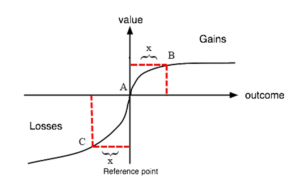
Their exploration didn’t stop there. Kahneman and Tversky’s experiments also led them to identify the Endowment Effect, a cognitive bias closely linked to their earlier findings. The Endowment Effect reveals that people tend to overvalue items simply because they own them. This bias adds resistance to decision-making, as it causes individuals to demand more to give up an item than they would be willing to pay to acquire it. The connection between this effect and the Value Function lies in their shared emphasis on loss aversion—whether it’s the fear of losing money or giving up a prized possession. The fear of losing something we possess is so strong that it skews our perception of its value, even if we wouldn’t have been willing to pay the price to acquire it in the first place.
Understanding how these concepts interconnect can help UX designers create experiences that minimize perceived risks and build a sense of security and trust. When applied together, these strategies can anticipate user hesitations and ease the perceived risks of committing to a subscription, service or making a purchase. Such consumer-friendly approaches help users feel like they’re reinforcing something they already own rather than taking the risk of trying something new.
Negative User Behaviors Undermine Business Performance
Loss aversion often leads to negative user behaviors, such as shopping cart abandonment and discontinuing sign-ups, which can significantly impact business performance. For instance, users may abandon their carts when they fear missing out on a better deal elsewhere or feel uncertain about a purchase. Similarly, if signing up for a service feels risky or they may potentially regret it later – especially if the terms are unclear or users feel they lack control over the duration – they may halt the process altogether. These actions directly affect conversion rates and can lead to substantial revenue loss.
The emotional toll these experiences take on users can be considerable, leading to frustration and dissatisfaction, especially across different types of journeys. When users frequently encounter situations that make them feel uncertain or anxious, their overall trust in the brand diminishes, negatively impacting decision-making. This emotional response not only harms brand loyalty and retention but also makes it more challenging to acquire new customers. For example, if someone hesitates to complete a purchase due to concerns about return policies or hidden costs, that hesitation can taint their perception of the entire shopping experience and the brand itself.
For UX designers, understanding and mitigating these behaviors is crucial. It’s essential to create an environment where users feel confident and reassured in their decisions.
Boost User Confidence Through Strategic UX Design
To counteract loss aversion and boost user confidence, UX designers can emphasize potential gains rather than focusing on possible losses. Highlighting a business’s unique benefits, such as savings, convenience, loyalty programs or exclusive access, can help shift the user’s mindset from fear of loss to anticipation of gain. For instance, showcasing the advantages of a subscription service, like access to premium content or special discounts, can make users feel more positive about their decision.
Amazon’s “Subscribe and Save” program is an excellent example of how to effectively leverage loss aversion by offering ongoing benefits and a clear savings progression. Users start with a 5% discount on their purchases, which can increase to 15% when they receive five or more products in one auto-delivery. This milestone progression motivates users to continue subscribing and adding more products to unlock greater savings, transforming the fear of missing out into a positive driver that boost sales and retention.

Here’s a breakdown of how the service works:
Initial Savings: Users start with a 5% discount, which provides an immediate benefit and encourages the initial commitment.

Progress Milestone: The potential to unlock a 15% discount by receiving five or more products in one delivery motivates ongoing engagement and reinforces a sense of progress.
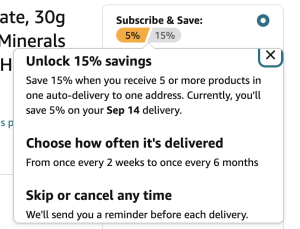
Flexible Delivery: Users can choose how often products are delivered, from every two weeks to every six months, offering convenience and a tailored experience.
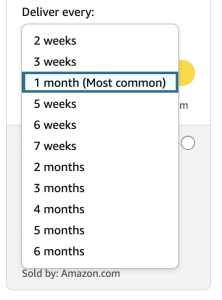
Emotional Relief: The option to skip or cancel at any time, along with reminders before each delivery, alleviates anxiety about long-term commitments and provides a sense of control.

Providing clear and consistent reassurances throughout the user journey is essential for ensuring users feel secure in their decisions. Transparency about how the subscription works, easy cancelation policies, and visible trust signals, such as security badges and customer testimonials, help users feel confident and more likely to complete transactions.
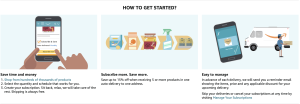
Positive reinforcement techniques, such as progress indicators and rewards, also play a crucial role in building user confidence. Progress indicators, similar to Amazon’s “Subscribe and Save” program, motivate users by showing them how far they’ve come, reducing the fear of an unknown and lengthy commitment. Rewards, whether tangible like discounts or intangible like a sense of achievement, further encourage users to continue engaging with the product. By framing the decision as a continuation of ownership, Amazon reduces the perceived risk and encourages repeat purchases.
Transform UX Design by Addressing Loss Aversion for Better Engagement and Business Success
Understanding and addressing loss aversion in UX design is crucial for creating positive and engaging user experiences. By understanding the psychological principles behind loss aversion, UX designers can implement strategies that emphasize potential gains, provide reassurances and use positive reinforcement to build user confidence. These approaches help mitigate negative behaviors leading to improved user trust and satisfaction.
Prioritizing user psychology in design ensures a balance between being user-centered experiences and business goals. By understanding users’ fears and motivations, designers can create intuitive and reassuring interfaces that foster long-term engagement and loyalty, driving business success. Thoughtfully addressing loss aversion can transform user interactions, resulting in higher conversion rates and stronger customer relationships.
